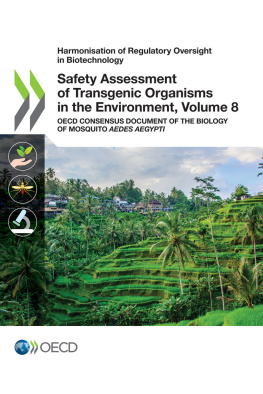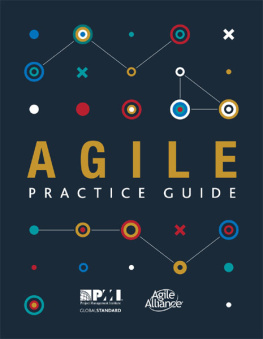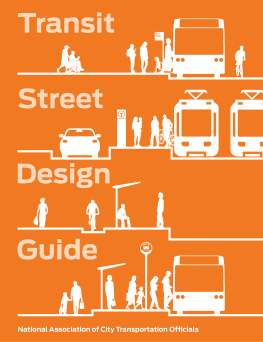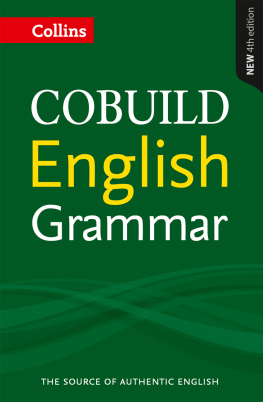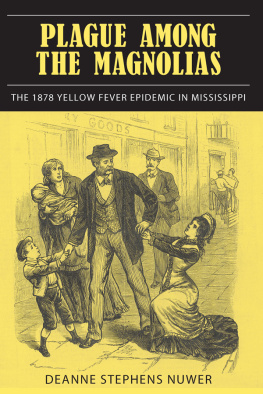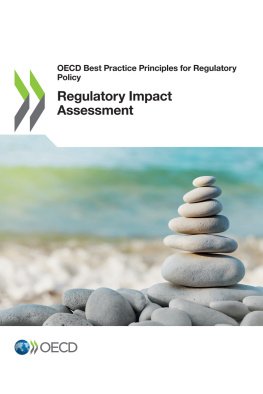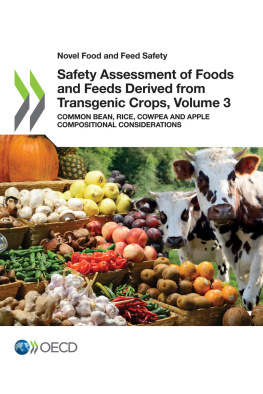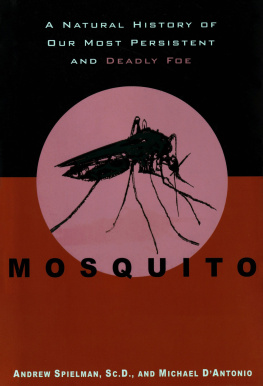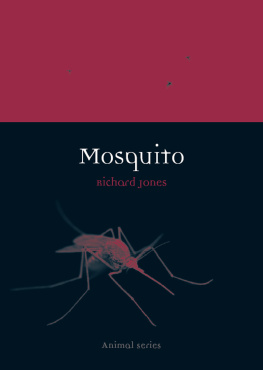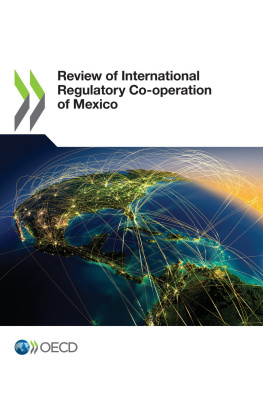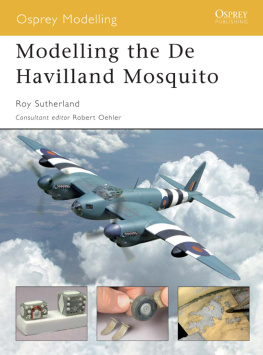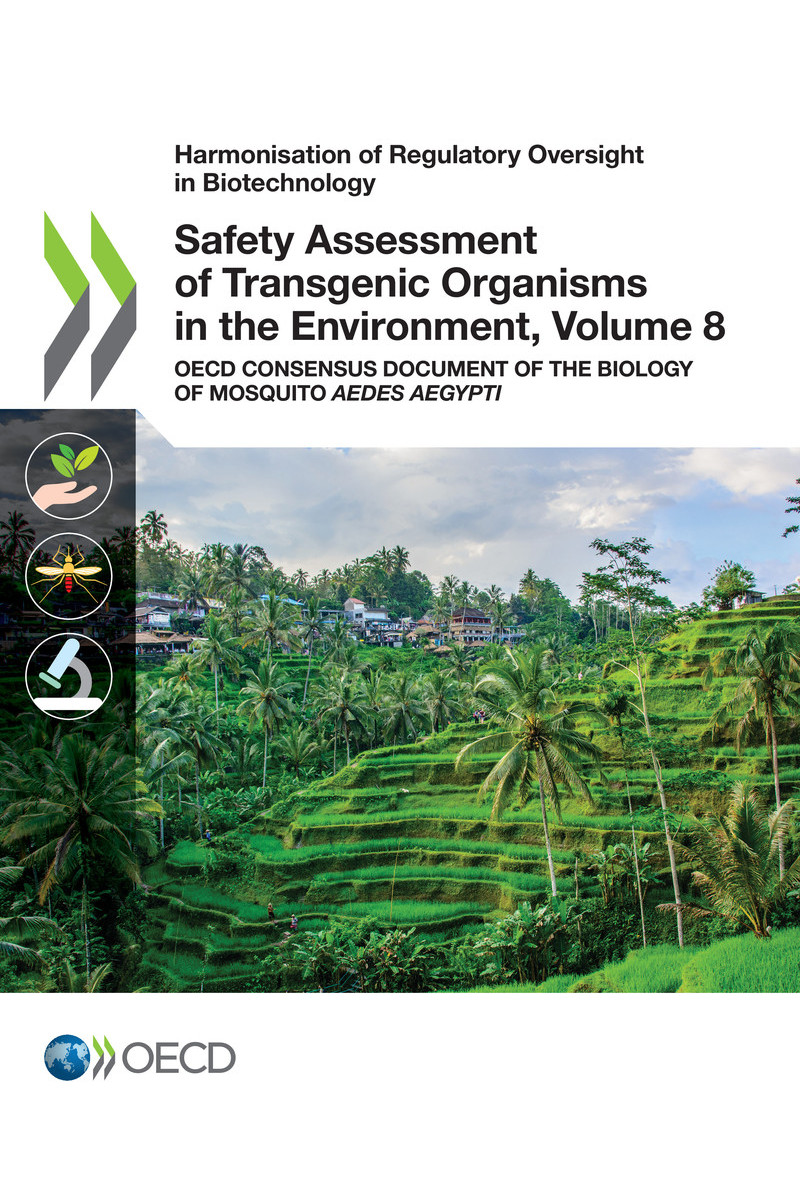Harmonisation of Regulatory Oversight in Biotechnology
Safety Assessment of Transgenic Organisms in the Environment, Volume 8 OECD Consensus Document of the Biology of Mosquito Aedes aegypti
Please cite this publication as:
OECD (2018), Safety Assessment of Transgenic Organisms in the Environment, Volume 8: OECD Consensus Document of the Biology of Mosquito Aedes aegypti , Harmonisation of Regulatory Oversight in Biotechnology, OECD Publishing, Paris.
https://doi.org/10.1787/9789264302235-en
Metadata, Legal and Rights
ISBN: 978-92-64-30222-8 (print) - 978-92-64-30223-5 (pdf) - 978-92-64-30333-1 (HTML) - 978-92-64-30332-4 (epub)
DOI: https://doi.org/10.1787/9789264302235-en
Series: Harmonisation of Regulatory Oversight in Biotechnology
ISSN: 2414-6854 (print) - 2311-4622 (online)
This work is published under the responsibility of the Secretary-General of the OECD. The opinions expressed and arguments employed herein do not necessarily reflect the official views of OECD member countries.
This document, as well as any data and any map included herein, are without prejudice to the status of or sovereignty over any territory, to the delimitation of international frontiers and boundaries and to the name of any territory, city or area.
The statistical data for Israel are supplied by and under the responsibility of the relevant Israeli authorities. The use of such data by the OECD is without prejudice to the status of the Golan Heights, East Jerusalem and Israeli settlements in the West Bank under the terms of international law.
Photo credits: Cover Maks Ershov.
Corrigenda to OECD publications may be found on line at: www.oecd.org/publishing/corrigenda .
OECD 2018
You can copy, download or print OECD content for your own use, and you can include excerpts from OECD publications, databases and multimedia products in your own documents, presentations, blogs, websites and teaching materials, provided that suitable acknowledgement of OECD as source and copyright owner is given. All requests for public or commercial use and translation rights should be submitted to .
Foreword
Modern biotechnologies are applied to plants species (crops, flowers, trees), animals and micro-organisms. The safety of the resulting transgenic organisms when released in the environment for their use in agriculture, forestry, the food and feed industry or for other applications represents a challenging issue. Genetically engineered products are rigorously assessed by their developers during their elaboration, and by governments when ready for release, to ensure high safety standards. This remains essential with new biotechnology developments using insects to fight against disease outbreaks: engineered mosquitoes need to be evaluated through a scientifically sound approach to risk/safety assessment that will inform biosafety regulators and support the decision concerning the release of these novel organisms in the environment.
The OECD offers a long-standing recognised expertise in biosafety and contributes to facilitating an harmonised approach. The OECDs Working Group on Harmonisation of Regulatory Oversight in Biotechnology (WG-HROB) was established in 1995. The WG-HROB gathers national authorities responsible for the environmental risk/safety assessment of products of modern biotechnology in OECD countries and other economies. International organisations and experts involved in biosafety activities are associated with this programme.
The primary goals of the WG-HROB are to promote international regulatory harmonisation, to ensure that methods used in the risk/safety assessment of genetically engineered products are as similar as possible. This may open the way to possible recognition and even acceptance of information from the assessments of other countries. The benefits of harmonisation are multiple: it strengthens mutual understanding among countries, avoids duplication, saves resources and increases the efficiency of the risk assessment process. Overall, it improves safety while reducing unnecessary barriers to trade.
The environmental risk/safety assessment of transgenic organisms (biosafety assessment) is usually based on the information collected on the characteristics of the host organism, the introduced traits, the environment into which the organism will be released, the interaction between these, and the intended use of the organism for agriculture, forestry, food and feed industry, health improvement or other purposes. Since its establishment, the WG-HROB decided to focus its work on identifying parts of this information which could be commonly used among countries when conducting environmental risk/safety assessment, aiming to encourage information sharing and prevent duplication of effort among countries. Biosafety consensus documents are one of the major outputs of its work.
The OECD Biosafety consensus documents are intended to be a snapshot of current information on a specific host organism or trait, for use during regulatory assessments of organisms considered for their release in the environment. These publications are not designed to be a comprehensive source of information on everything that is known about a specific host or trait, but they do address the key elements and core set of science-based issues that member countries believe are relevant to biosafety assessment. This information is said to be mutually acceptable among OECD Members and other economies associated with the work. The Biosafety consensus documents offer practical tools which compile science-based information useful for environmental risk/safety evaluation process. Because these documents are publicly available, they can also benefit other countries around the world wishing to use these tools along the same principles.
To date, a total of 57 consensus and guidance documents have been published by the WG-HROB. They mainly address the biology of crops, trees and micro-organisms, as well as specific traits introduced in engineered plants. Their scope is currently enlarging, in line with the new biotechnological developments and wider applications to new fields. The first document related to an animal species was published in 2017 on Atlantic salmon, a fish reared for food production but also occurring in the wild in undomesticated populations.
A further step has been taken in 2018 with this document on the mosquito Aedes aegypti , addressing for the first time the biology and ecology of an insect species. It is also the first OECD Biosafety consensus document to focus on an organism for which biotechnological applications are not aimed at an increase in production or the quality enhancement of the product (which are usual targets of crop variety improvement for instance) but are driven here by health considerations. In the case of mosquitoes, the objective of some current biotechnological developments is to fight against disease outbreaks by reducing the insect population or limiting its capacity to transmit diseases.
The mosquito Ae. aegypti is the main vector of viruses responsible for severe diseases such as yellow fever, dengue fever, Zika fever and chikungunya. This insect is currently subject to biotechnological research and applications (including genetic engineering), aiming to contribute to the control its population, reduce its capacity to spread diseases and thus limit its drastic impact on human health.

